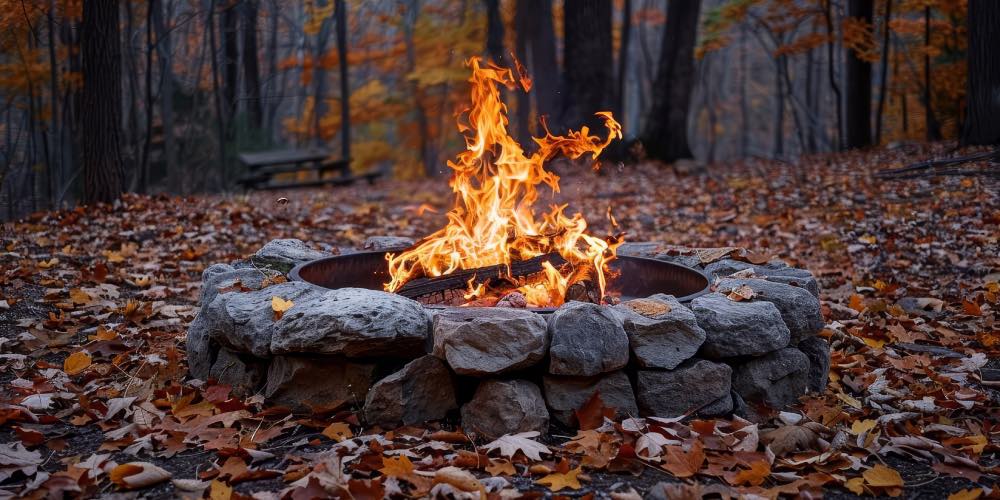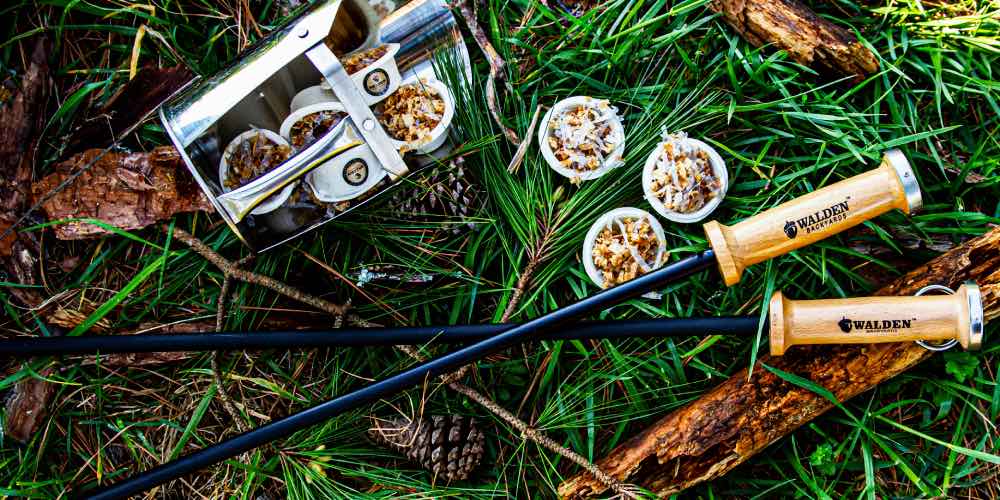Building a fire pit is a fantastic way to enhance your backyard's appeal, fun and functionality. In addition to choosing the right location and building a fire pit area that best suits your personality, the key to a long-lasting and beautiful fire pit lies in the materials you choose. Let's delve into the best materials for constructing a durable fire pit that will deliver on your vision, stand the test of time and bring warmth and joy to your outdoor gatherings.
Introduction to Fire Pit Materials
When it comes to building a fire pit, selecting the right materials is crucial for both durability and aesthetics, together delivering a solid long term value. The materials you choose should withstand high temperatures, resist weathering, and complement your outdoor space's design. Here, we'll explore a variety of materials, each with its unique benefits and characteristics.
Durable Fire Pit Materials
Concrete: Strength and Customizability
Concrete is a popular choice for fire pit construction due to its strength and versatility. It can be molded into various shapes and sizes, allowing for custom designs that fit your backyard perfectly. Additionally, concrete is highly durable, capable of withstanding high temperatures and resisting weather damage
Pros:
- Highly customizable
- Extremely durable
- Heat resistant
Cons:
- Can crack over time if not properly protected or maintained
- Requires sealing to prevent moisture damage
Stainless Steel: Modern and Rust-Resistant
Stainless steel offers a sleek, modern look while providing excellent resistance to rust and corrosion. It's an ideal material for those who prefer a contemporary design for their fire pit. Stainless steel is also lightweight and easy to clean, making it a low-maintenance option.
Pros:
- Rust and corrosion-resistant
- Modern aesthetic
- Easy to clean and maintain
Cons:
- Can be more expensive than other materials, so a thin gauge steel is commonly used
- May discolor over time with exposure to high heat
- Most stainless steel options on the market today are small, can-style burners which limit fire visibility
Natural and Aesthetic Options
Natural Stone: Classic and Heat Retentive
Natural stone, such as granite or sandstone, provides a timeless and rustic look for your fire pit. Stone is excellent at retaining heat, making it perfect for cozy evenings outdoors. It also blends seamlessly with natural landscapes, enhancing the overall aesthetic of your backyard.
Pros:
- Natural and rustic appearance
- Excellent heat retention
- Durable and long-lasting
Cons:
- Can be heavy and challenging to install if you decide to assemble multiple courses
- Some stones may crack when exposed to high heat, if not protected
- May require sealing to prevent moisture damage
Copper: Stylish and Efficient Heating
Copper fire pits are not only stylish but also efficient in heating. Copper's excellent thermal conductivity ensures even heat distribution, making your fire pit experience more enjoyable. Over time, copper develops a beautiful patina, adding character to your outdoor space.
Pros:
- Attractive and stylish
- Efficient heat distribution
- Develops a unique patina over time
Cons:
- Can be more expensive
- Requires regular maintenance to prevent tarnishing
- High heat of copper surface may be dangerous if not shielded from touch
Low-Maintenance Materials
Carbon Steel: Low-Maintenance and Long-Lasting
Carbon steel is known for its durability and low maintenance requirements. It's a robust material that can withstand high temperatures and harsh weather conditions. Carbon steel fire pits often come with a protective coating to prevent rust and corrosion, ensuring longevity.
Pros:
- Highly durable
- Low maintenance
- Resistant to high temperatures and weather conditions
Cons:
- Can be heavy and difficult to move
- May require periodic recoating or re-seasoning to maintain appearance
Combining Carbon Steel Fire Inserts/Parts with Concrete or Stone Surrounds
One innovative approach to building a fire pit is combining carbon steel fire pit parts or inserts with concrete block surrounds or natural stone surrounds. This combination leverages the durability and heat resistance of carbon steel with the aesthetic appeal and strength of concrete or stone. Combining a high quality carbon steel insert set with a concrete block or stone surround also delivers the safest backyard fire pit arrangement.
Benefits of Combination Construction
- Durability: Carbon steel inserts provide a durable core that can withstand high temperatures without deforming or corroding, and this barrier will protect the block or stone surround materials from extreme heat. Concrete or stone surrounds offer additional protection from the elements as well as delivering additional structural integrity.
- Customizability: Concrete blocks and natural stones can be arranged in various designs, allowing for a personalized and unique fire pit that complements your outdoor space.
- Aesthetic Appeal: The combination of sturdy carbon steel with the rustic or modern look of concrete or stone creates a visually appealing focal point in your backyard.
- Safety: The steel insert shields the surround from extreme heat, and the concrete block or stone surround shields your friends and family from the hot steel. You get the best of both worlds, ambient heat and extra safety from risk of burns.
- Heat Retention: Natural stone surrounds can offer excellent heat retention, enhancing the warmth and ambiance of yourfire pit for steady comfort over hours.
Installation Tips
- Foundation: Ensure a solid foundation for the concrete blocks or stone to prevent shifting and settling over time.
- Alignment: Properly align and secure the carbon steel insert within the concrete or stone surround to ensure stability and safety.
- Sealing: Apply a sealant to the concrete or stone to protect against moisture damage and to enhance durability. And if you’re inclined to cook over your fire pit, the sealing will help make that bacon or burger grease less likely to leave a mark.
Choosing the Right Material for Your Fire Pit
Selecting the right material for your fire pit depends on your preferences, budget, and the specific conditions of your outdoor space. Consider factors such as aesthetic appeal, durability, maintenance requirements, and how the material will complement your backyard design.
Maintenance Tips for Fire Pit Longevity
Regular Cleaning and Sealing
Regular cleaning and sealing are essential to maintain your fire pit's appearance and durability. For materials like concrete and natural stone, sealing prevents moisture penetration and reduces the risk of cracking. Clean your fire pit regularly to remove ash and debris that can cause staining and deterioration.
Protection from the Elements
Protecting your fire pit from the elements is crucial for its longevity. Be sure to shield your fire pit (or choose a fire pit with its own protective cover/lid) to guard it from rain, snow, and debris when not in use. For metal fire pits, maintaining their protective coating can prevent rust and corrosion. Heavy steel parts that get exposed to extreme heat should be seasoned with vegetable oil from time to time (much like an iron skillet). Storing portable fire pits in a dry place during harsh weather conditions can extend their lifespan.
FAQs
Q: What is the most durable material for a fire pit?
A: The most durable materials for fire pits include concrete, carbon steel, stainless steel, and natural stone due to their strength and resistance to high temperatures and weather conditions.
Q: How do I maintain a concrete fire pit?
A: To maintain a concrete fire pit, regularly clean it to remove ash and debris, and apply a sealant to protect against moisture and cracking. A good heavy steel fire pit liner or insert will go a long way to protect the concrete from extreme heat.
Q: Can stainless steel fire pits rust over time?
A: Stainless steel fire pits are highly resistant to rust and corrosion. However, over prolonged exposure to harsh conditions, some discoloration will likely occur.
Q: What are the benefits of using natural stone for fire pits?
A: Natural stone offers a classic and rustic look, excellent heat retention, and durability, making it a popular choice for fire pit construction.
Q: How can I protect my fire pit from weather damage?
A: Protect your fire pit from weather damage by using covers, applying protective coatings for metal pits, and storing portable fire pits indoors during harsh weather.
With the right materials and proper maintenance, your fire pit can become a long-lasting centerpiece for outdoor gatherings, providing warmth and a cozy ambiance for years to come. Happy building!











Leave a comment
This site is protected by hCaptcha and the hCaptcha Privacy Policy and Terms of Service apply.